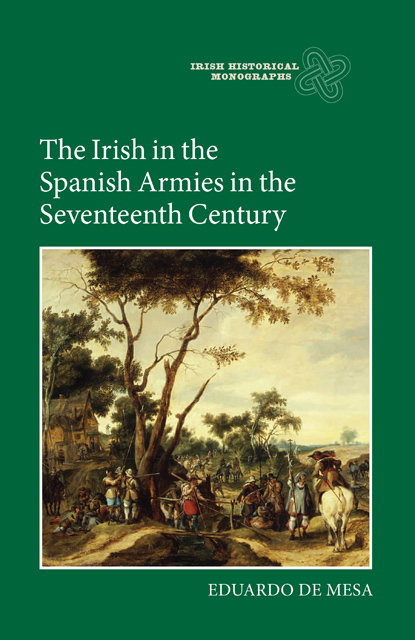Foreword by Dr David Parrott
Published online by Cambridge University Press: 23 February 2023
Summary
The publication of Geoffrey Parker’s Army of Flanders and the Spanish Road (1972) was a watershed moment in early modern military history. The book provided a comprehensive ‘inside’ view of the workings of the most significant military institution in Europe between 1560 and 1660, and set the agenda for subsequent debate about early modern military organisation and administration, discipline and motivation, and the centrality of logistics and communications to military operations. Although subsequent works have built on this original framework, they have generally shared Parker’s focus on the Spanish, more particularly the Castilian, element of the armies of the king of Spain. At the heart of the armies was an elite of native Spanish troops, notably those concentrated in the Tercios Viejos and the elite cavalry units, whose recruitment, officer corps and administration were directly controlled by the Castilian central authorities and their representatives within the army. The institutional development of this element of the army, above all in Flanders, with its hospitals, support-systems, military training, carefully maintained personnel and fiscal records, stands in stark contrast to the ad hoc and haphazard military administration of European states generally regarded as more ‘progressive’ than Habsburg Spain.
Yet the focus on these Castilian troops and their military institutions neglects a wider issue, what may indeed have been the greatest strength of the early modern Spanish monarquía. For more than a precocious Castilian administration, the monarquía was most notable for its ability to co-opt and integrate into a collective military and administrative system both the constituent nations of the Habsburg ruler’s territories, and also the soldiers, sailors, merchants, professional classes and nobles of foreign states. The Spanish monarquía was the greatest example of what Sir John Elliott identified as the early modern ‘composite monarchy’. Yet for too long the assessment has been a negative one: the Catalan and Portuguese revolts of 1640 are often cited to demonstrate that the composite model was a hopeless anachronism, unable to compete with emergent nation states. Only recently has recognition started to grow that there is a more positive aspect: the capacity of the Spanish monarquía to integrate the military and governing elites of its numerous territories, and the resilience and resources this offered to the Spanish system.
- Type
- Chapter
- Information
- The Irish in the Spanish Armies in the Seventeenth Century , pp. xi - xiiiPublisher: Boydell & BrewerPrint publication year: 2014



